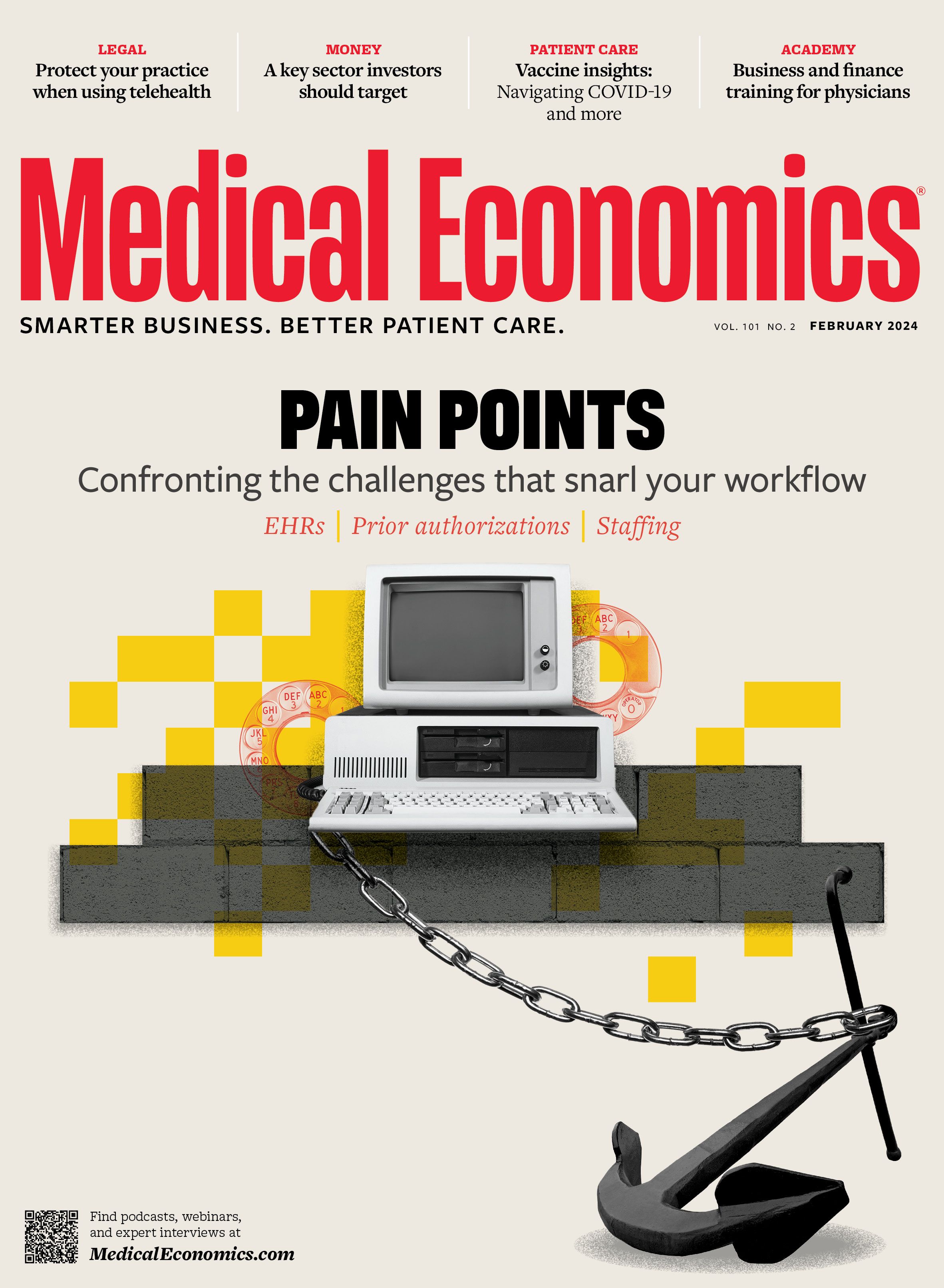Blog
Article
Medical Economics Journal
One key market sector likely to grow in 2024
Author(s):
Investors looking for stocks poised to perform well in 2024 might want to consider industrials — companies that make stuff that manufacturers use to make stuff ultimately purchased by commercial and retail customers.
One market sector poised for growth: ©Nudphon - stock.adobe.com

Investors looking for stocks poised to perform well in 2024 might want to consider industrials — companies that make stuff that manufacturers use to make stuff ultimately purchased by commercial and retail customers.
Industrials also build manufacturing machinery, make deliveries and transport items essential to industrial and consumer goods manufacturing on railroads, trucks, ships and planes. They also manufacture those conveyances as well as machines and materials used for construction and farming.
Today’s industrials are the equivalent of what windmill part makers were in the Middle Ages, along with that era’s makers of blacksmith tools, carriage wheels and sailing ships. They are indispensable.
Some of the nation’s largest companies fall into the industrials sector. The market index that tracks some of them (along with some companies that aren’t so industrial), the Dow Jones Industrial Index, is one of the most frequently cited.
Diverse sector
This sector includes companies that provide everything from farm animal feed to jetliners to consumer package delivery to data processing services.
In this increasingly digital world, some industrial companies have become quite technological, incorporating digital features in seemingly unlikely products to enhance accuracy and utility. Examples include fully autonomous combines from Deere & Co. and earthmovers and huge mining vehicles from Caterpillar, equipped with precise GPS navigation systems. Lockheed Martin and Boeing are listed as industrials but are more like tech companies in industrial clothing, as their planes are replete with digital systems.
Though still quite strong, the U.S. economy has begun to slow a bit in response to elevated interest rates, but industrial stocks, which showed remarkable resilience in the initially slow market of 2023, have been rising in the past few months and they’re poised to deliver good growth this year.
Industrial Select Sector SPDR ETF (XLI), one of the largest industrials funds, grew about 14% in 2023 despite widespread recession forecasts all year. These forecasts were like warnings of an apocalypse — always imminent but never arriving. Now, with forecasts changing and the albatross of negative expectations flying out to sea, this sector may become more attractive to investors, especially those developing FOMO (fear of missing out).
Analysts’ projections currently have industrials’ earnings growing at an average of 11.2% this year, compared with 10.7% for the S&P 500 index of large company stocks. Yet some bullish high-profile investors envision much brisker growth amid what they expect to be an industrial/manufacturing renaissance, based on demand data in various industrials markets. Moreover, the market seems to be losing 2023’s onus of negativity.
Vestigial onus
Yet vestiges of this onus, nurtured by inveterate pessimists, may still be tamping down industrials prices somewhat. A revealing indicator of near-term share prices in a specific sector is how much new investment has been flowing into it. Industrial fund inflows in 2023 were well below their levels in 2016 and 2020, when the overall market was mustering for better performance.
These low inflows are good news for investors bullish on industrials because they suppress prices, enabling them to buy shares lower and position for growth after inflows increase.
Further, with the aftermath of the pandemic having abated — after a couple of years of yo-yoing interest rates and ratcheting inflation that’s now subsided substantially — the market runway is now cleared of these obstacles. This is particularly good news for industrials, an economically sensitive sector.
Residential home construction firms and their suppliers are thriving as homebuilders tap high demand amid a chronic shortage of homes in the U.S., currently exacerbated by a severe shortage of listings of existing homes. This stems from elevated interest rates: Would-be buyers don’t want to give up their low-interest mortgages in this higher-rate environment, so buyers turn to new homes.
Market drivers
Other factors spurring the growth of the industrials include the following:
Reshoring or onshoring.
This is the apparent nascent trend of U.S. multinational companies locating or expanding on American soil manufacturing operations long concentrated abroad. One impetus for this is the fragile supply chains that manufacturers experienced post pandemic, when demand for goods spiked amid low supply. Inflationary effects of this supply-demand mismatch were compounded by delayed shipments from then-COVID-19-wracked China. Manufacturing domestically gets around these problems, but it’s naturally more expensive.
Some observers make the case that reshoring and its impacts on industrials may be over-anticipated. The bottom line seems to be whether U.S. manufacturers ultimately begin domestic production of mobile phones, which make up a huge segment of products produced in China and elsewhere for U.S. multinationals. Even if this happens, it will probably take a while. In the interim, more multinationals are talking about reshoring plants for other products from China and other locations abroad, not only to reduce supply chain risk but also to manage geopolitical risks.
Industrials’ status of not being a political hot potato.
This is in sharp contrast to large companies in other sectors, whose domestic and global operations are typically buffeted by political winds and regulation changes, and geopolitical tensions, respectively. Utilities, energy, communications and financials are all subject to such impacts in ways that industrials, refreshingly, aren’t.
Abundant ongoing federal stimulus.
Three acts of Congress are providing substantial funding aimed at supporting initiatives including clean energy, clean water, electric vehicles, broadband infrastructure and tech development and manufacturing, among others. This stimulus, much of it in the form of financing and tax advantages, comes from the $1.2 trillion Infrastructure Investment and Jobs Act of 2021 and the Inflation Reduction Act (with $783 billion in provisions for energy security and countering climate change) and the CHIPS and Science Act, both of 2022.
After typical bureaucratic delays, as well as the necessary lag time for project development and approval, disbursements from this legislation are now flowing apace into a wide variety of projects: highways and bridges, tunnels and airport terminals, utility plants and various environmental and technological initiatives. Infrastructure companies, a subsector of industrials, have already benefited substantially from the infrastructure act, as evidenced by the returns of companies in the Global X U.S. Infrastructure Development ETF (PAVE), whose share price has increased about 30% over the past year as disbursements from the act have finally begun to flow. The eventual extent of the stimulus may not be fully baked in, so share prices may continue to grow as this stimulus boosts revenues, driving earnings in the next several years.
The CHIPS and Science Act is a huge impetus (nearly $53 billion worth) for tech development, largely the domestic manufacture of semiconductors, the central nervous systems of products. Design- and software-focused U.S. semi companies have long lagged behind foreign-sited plants in the actual production of semiconductors. Many U.S. companies’ chips are produced from their designs on foreign soil, primarily by Taiwan Semiconductor, which acts as a job shop producer for various global tech companies. Continuing disbursements from this legislation, aimed at making the U.S. more competitive with Taiwan Semi, should be an increasing tail wind for industrials building and equipping new tech company plants and supplying them with essential components and services.
Reasonable valuations currently make some industrial companies excellent buys. Some are particularly noteworthy for their relatively low risk, based on various financial characteristics reflecting strong balance sheets.
Among this narrow low-risk group are some that, while not household names, have the best potential for growth over the next few years.
These stocks include the following:
Insperity (NSP). The human resources services company has an average analysts’ five-year growth projection of 15% a year, starting from a low point, as its share price declined about 6.7% in the last half of 2023.
A.O. Smith Corp. (AOS). The manufacturer of boilers and commercial/residential water heaters has a five-year growth forecast of 10% annually. This is a common holding of large industrials funds.
Brady Corp., Class A shares (BRC). This smaller provider of workplace safety and identification products has a low price-earnings ratio (a good sign of value) and five-year average annual growth projection of 9%.
Dover Corp. (DOV). This provider of equipment and components, aftermarket parts and support services has an average annual growth projection of 10.31%, coming off flat performance in the last half indicator of 2023. Dover has high return on equity — auspicious for continued stability and performance.
Perhaps no investment could be more traditionally patriotic than investing in American industry. Now is an advantageous time to be a traditional patriot.
Dave S. Gilreath, CFP, is a founding principal and CIO of Sheaff Brock Investment Advisors, an investment firm for individual investors, and Innovative Portfolios, an institutional money management firm. Based in Indianapolis, the firms manage assets of about $1.3 billion. The investments mentioned in this article may be held by those firms, Innovative Portfolios’ ETFs, affiliates or related persons. There may be a conflict of interest in that the parties may have a vested interest in these investments and the statements made about them.






